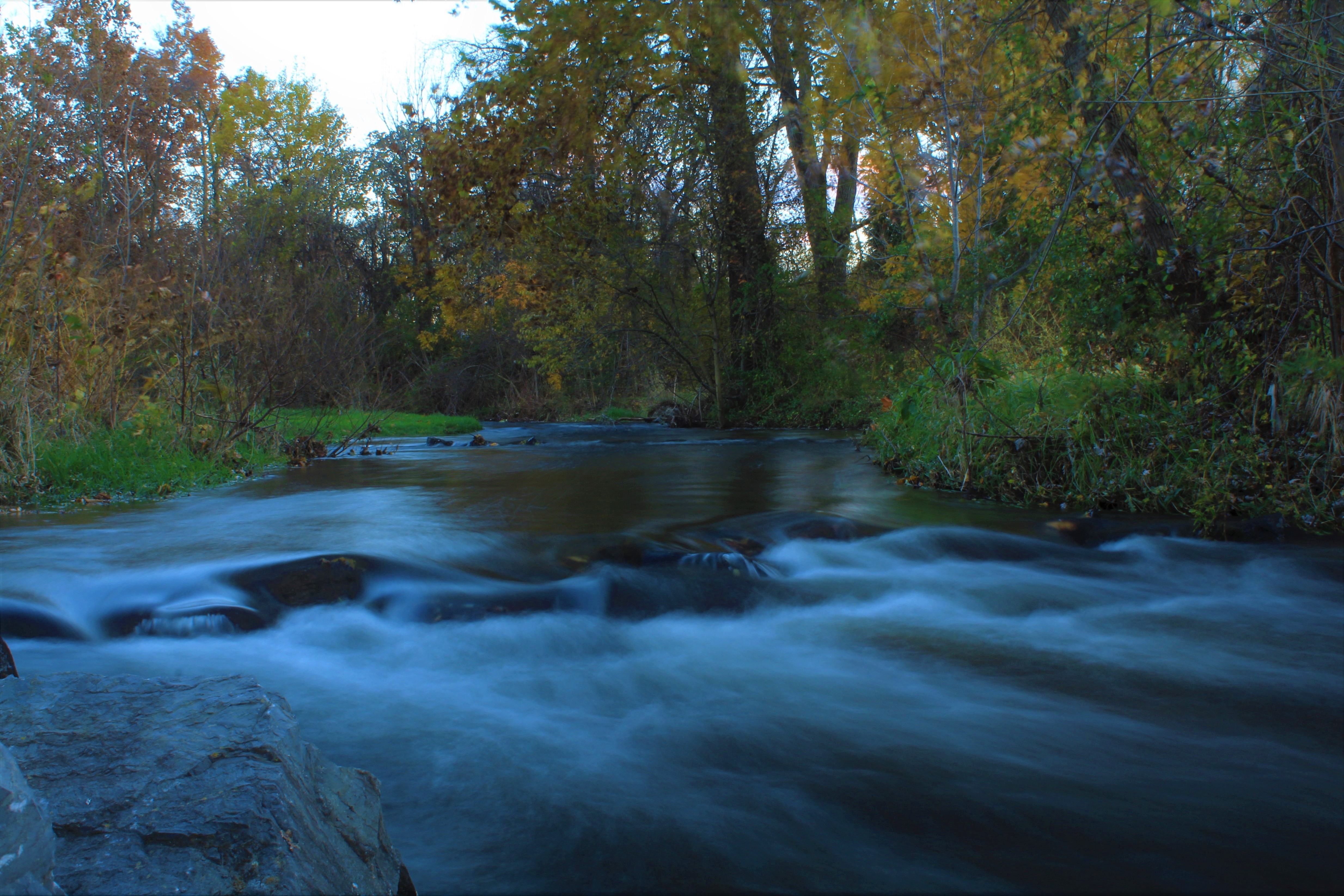BURD RUN INTERDISCIPLINARY WATERSHED RESEARCH LABORATORY
The Burd Run Interdisciplinary Watershed Research Laboratory at Shippensburg University (SU) is a cooperative effort within the Department of Geography-Earth Science to provide field training through collection and analysis of environmental data from a single watershed.
Watershed Description
Burd Run heads atop South Mountain, the local name given to the northern part of the Blue Ridge, at an elevation of 591m. There, two mountain tributaries flow through the Michaux State Forest, an area of sandy soils developed on Cambrian quartzite. Near the base of South Mountain, these tributaries combine and flow across thick Pleistocene colluvial deposits that support mixed forestry and agriculture eventually emerging into the Cumberland Valley. As the colluvium thins with distance from the base of the mountain, several units of Ordovician and Cambrian limestone are exposed, some of which include solution cavities and other karst features. Agriculture is the primary land use on the silt loam and clay loam limestone soils until the stream flows into Shippensburg. Urban land uses dominate the lower watershed, where the stream eventually flows across the SU campus at an elevation of 189m and a watershed drainage area of 51.8 km2.
Water quality varies considerably with geology and land use. For example, pH readings in the forest/quartzite environment are acidic (pH = 4.5), whereas water flowing through the limestone terrain of the Cumberland Valley is buffered (pH = 7.5). Temperature, turbidity, dissolved oxygen, and other water quality parameters also vary considerably in the different watershed environments.
Stream and Wetlands Restoration Project
In 2001-2002, a stream channel, floodplain, and wetland restoration project was completed in the Shippensburg Township Park to address stream bank erosion, poor aquatic habitat quality, and high nutrient concentrations in spring water and the stream. Restoration was designed by John Herrmann (1999 MS thesis, Geo-environmental Studies) and funded by a Pennsylvania Growing Greener grant.
|
The Burd Run project:
|
 |

